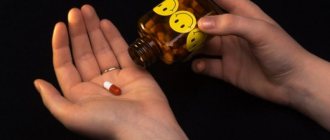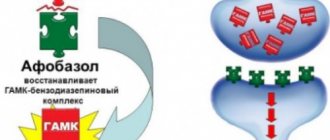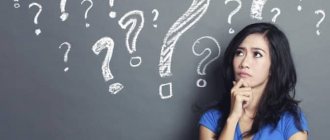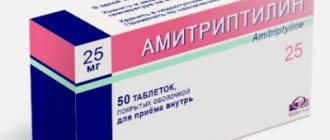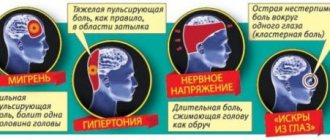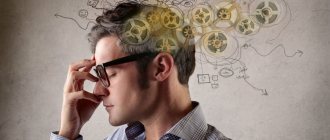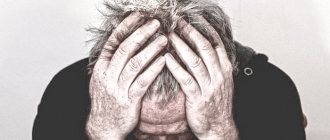Neuroleptics
- a group of drugs widely used in medicine, affecting dopamine receptors primarily in the brain.
They have been used for more than 50 years and doctors have accumulated extensive experience in their effective use, as well as data on their side effects.
Neuroleptics are used in psychiatry to treat endogenous diseases, the consequences of organic lesions of the nervous system, personality disorders and eating disorders.
Neuroleptic drugs are the basis for the treatment of psychosis, schizophrenia, and help with psychomotor agitation and aggressiveness.
They are used in surgery for premedication, in the treatment of internal diseases for disorders of the gastrointestinal tract, to help with poisoning, as anti-shock agents and agents that restore the autonomic system.
Self-prescription of a neuroleptic is impossible. Antipsychotics can be purchased in pharmacies only by prescription!
For the treatment of mental disorders in practice, there is a division of antipsychotics into typical ones:
- chlorpromazine;
- haloperidol;
- triftazine;
- Sonapax, etc.
And atypical:
- clozapine;
- risperidone;
- olanzapine;
- aripiprazole, etc.
Typical antipsychotics have a therapeutic effect on the productive symptoms of psychosis (delusions, hallucinations, aggression), while atypical ones can be useful for the treatment of negative symptoms (apathy, passivity, isolation, emotional impoverishment).
Like any medicine, a neuroleptic drug has indications and contraindications, which are determined by the doctor.
Classification
The classification of antipsychotic drugs is compiled according to various characteristics of the drugs. According to this classification, there are typical and atypical antipsychotics.
Depending on the clinical effect of the drug, antipsychotic drugs are:
- sedative;
- stimulating;
- antipsychotic.
The duration of exposure to neuroleptics also varies. According to this criterion, these drugs are divided into:
- drugs that have a short-term effect;
- medicines that have a prolonged effect.
Opinions
Most patients were satisfied with the effect of the drug "Etaperazine". Typically, people used it to get rid of depression. The antipsychotic coped with its task one hundred percent. And the price pleasantly surprised everyone.
Paliperidone has proven itself well in the treatment of elderly patients. However, some buyers note that they suffered from various side effects, although the manufacturer assured that taking the medication is completely safe.
But “Chlorprothixene” has collected quite a lot of negative reviews. People note the fact that the antipsychotic had virtually no effect on their condition. Money wasted, a drug for self-hypnosis - that’s what some users say in their reviews of this medication.
We hope the list of antipsychotic drugs from our article helped you decide which drug to choose. Remember that you should never exceed the prescribed dosage. If the drug does not help you, contact your doctor so that he can prescribe you another one.
Typical antipsychotics
Drugs of this drug group have high therapeutic potential. These are antipsychotic drugs. Their use is most likely accompanied by the development of side effects.
Similar antipsychotic drugs are derivatives of the following compounds:
- thioxanthene;
- phenothiazine;
- benzodiazepine;
- indole;
- butyrophenone;
- diphenylbutylpiperidine.
In turn, the group of phenothiazine derivatives, depending on their chemical structure, can be differentiated into the following compounds:
- having a piperazine core;
- with an aliphatic bond;
- having a piperidine core.
In addition, according to the degree of effectiveness, antipsychotics can be differentiated into:
- sedatives;
- stimulants that have an antidepressant effect;
- strong antipsychotics.
Effects, benefits
These new generation drugs may have the following effects:
- improving memory concentration and attention;
- sedative effect;
- antipsychotic effect;
- neurological effect.
Advantages of atypical antipsychotics:
- a rare manifestation of motor pathologies;
- low risk of side effects;
- unchanged prolactin level;
- easy removal from the body by the excretory system;
- no effect on dopamine metabolism;
- easy tolerability by patients;
- possibility of treating pediatric patients.
New generation neuroleptic drugs
Diseases for which antipsychotics are the basis of therapy:
- Schizophrenia. This is a mental disorder in which a person loses interest in things, feels detached, and hallucinates.
- Schizoaffective psychosis. The disease combines symptoms of schizophrenia and mood disorders. Symptoms include delusions, hallucinations, and disordered speech.
- Some forms of manic-depressive psychosis (bipolar disorder).
- Severe depression.
In combination with other drugs (for example, neuroblockers), antipsychotics are used to treat:
- Attention deficit hyperactivity disorder. The disease is characterized by constant manifestations of absent-mindedness and/or impulsivity that interfere with normal life.
- Anorexia, bulimia, loss of control over the amount of food consumed.
- Post-traumatic stress disorder.
- Obsessive-compulsive disorder. This is a condition when a person has uncontrollable, obsessive ideas and sensations that he wants to repeat.
- Generalized anxiety disorder. With this condition, the patient constantly feels anxious, and this feeling gets worse.
- Delusions and hallucinations (paranoia, voices).
- Restlessness, strong excitement.
- Incoherent speech, confused thinking.
- Aggressiveness.
- Mania.
Today, psychotherapy is actively used in the treatment of various psychological disorders. But in some cases it is impossible to do without the use of medications. Neuroleptics have long been used to treat various psychoses, as well as psychopathic and neurotic conditions. All drugs belonging to this group have a wider range of side effects.
Therefore, when prescribing them, a course of maintenance medications is also recommended; as a result, the patient has to take a large number of different medications. New generation atypical antipsychotics have fewer side effects, but they are no less effective in treating psychological disorders.
Indications for use
The drugs included in this group are prescribed in the psychiatry clinic of the Yusupov Hospital for the treatment of neuroses of various origins. They are suitable for patients of all age groups, including children and the elderly.
The use of antipsychotics is indicated for the following diseases:
- chronic and acute psychoses;
- psychomotor agitation;
- chronic insomnia;
- uncontrollable vomiting;
- Tourette's syndrome;
- disorders of a psychosomatic and somatoform nature;
- mood swings;
- phobias;
- movement disorders;
- preoperative preparation of patients;
- hallucinations, etc.
"Levomepromazine"
This drug is prescribed only for severe mental disorders, since it is incredibly strong. Also, “Levomepromazine” is one of the most popular antipsychotics, the indications for use of which are as follows:
- bipolar disorder;
- acute psychosis;
- schizophrenia;
- depression.
The drug is also very effective against various delusional disorders and hallucinations (auditory and visual). However, the drug is not available in pharmacies without a prescription, and only a qualified psychotherapist can prescribe the optimal dosage. Abuse of self-medication in these cases is strictly contraindicated.
Side effect
The development of side effects depends on the following factors:
- dosage used;
- duration of treatment;
- patient's age;
- his state of health;
- drug interactions of antipsychotics with other drugs.
The use of antipsychotics is most often accompanied by the following side effects:
- the activity of the endocrine system is disrupted (usually a reaction to long-term use of the drug);
- appetite increases or, conversely, decreases, body weight changes;
- at the beginning of treatment, excessive drowsiness appears;
- muscle tone increases, speech becomes slurred, and other symptoms of neuroleptic syndrome occur, which requires dosage adjustment.
Much less frequently, taking antipsychotics may be accompanied by:
- temporary loss of vision;
- disorders of the gastrointestinal tract (constipation and diarrhea);
- urination disorder;
- the appearance of dry mouth, severe salivation;
- trismus;
- problems with ejaculation.
"Fluphenazine"
This name of antipsychotic is known to many, because it can be considered one of the best medications of its kind. The medicine has virtually no side effects, but has a strong psychoactivating effect. In addition, this remedy significantly relieves irritability. Fluphenazine is recommended for use not only for severe neuroses, but also for various hallucinatory disorders. The main mechanism of action has a powerful blocking effect on the central receptors of the brain.
Each patient who decides to purchase this drug must be prepared for the fact that it will have to be injected into the gluteal muscle. Usually the dosage is prescribed by an experienced specialist, since it depends not only on the diagnosis, but also on the age of the patient. For example, for young people from 20 to 40 years old, the drug is administered in an amount of 0.5 milliliters (12.5 milligrams of active substance). But for elderly patients, the dosage should be halved - 0.25 milliliters (6.25 milligrams of the active substance).
Despite the fact that the list of contraindications here is extremely small, this drug is not recommended for people who suffer from heart failure. In addition, taking Fluphenazine simultaneously with narcotic analgesics can lead to disruption of the central nervous system, respiratory depression and hypotension. It is also highly undesirable to combine this medicine with alcoholic beverages. Only a psychotherapist can prescribe a more precise course of therapy.
List
The list of antipsychotic drugs is varied. The doctor at the Yusupov Hospital Psychiatry Clinic selects the optimal antipsychotic drug individually for each patient, depending on the diagnosis, age, health status and the presence of concomitant diseases.
Typical antipsychotics are the following:
- Chlorpromazine;
- Molindon;
- Haloperidol;
- Thioridazine, etc.
The most popular modern antipsychotics, without side effects, include:
- Triftazin;
- Fluphenazine;
- Quetiapine;
- Levomepromazine;
- Fluanxol;
- Abilify.
List of antipsychotics available without a prescription:
- Ariprizole;
- Etaperazine;
- Chlorprothixene;
- Olanzapine;
- Serdolect.
Atypical antipsychotics: a list of the safest and most effective drugs of the new generation:
- Solian;
- Sertindole;
- Clozapine;
- Lakvel;
- Deprall;
- Zeldox;
- Betamax;
- Prosulpin;
- Limipranil et al.
Author
Konstantin Yurievich Kazantsev
Neurologist, leading specialist of the neurology department
What pills are available without a prescription?
The list of antipsychotic drugs contains mostly medications that are dispensed on the basis of a doctor’s prescription. However, modern pharmacology offers several simple drugs that do not have a strong effect and can be sold without a prescription. Below is a small list of medications that have virtually no side effects:
- "Etaperazine." It has almost the same mechanism of action as Triftazin, however, the stimulating effect is more mild. This means that the drug is suitable for the treatment of verbal hallucinosis and various affective-delusional disorders.
- "Paliperidone." Typically comes in the form of extended-release tablets. The drug has virtually no side effects and is used to treat hallucinatory delusional syndrome and moderate schizophrenia.
- "Chlorprothixene." It has a mild sedative effect and helps fight depression. Usually prescribed by a specialist for the treatment of simple mental illnesses or as an adjuvant for hypochondriacal disorders.
These were only the most well-known antipsychotics that can be purchased at a pharmacy without a prescription. Of course, the effectiveness of such drugs remains highly questionable, so we suggest that you study the reviews of patients who have taken these drugs.
Bibliography
- ICD-10 (International Classification of Diseases)
- Yusupov Hospital
- World Health Organization. F4 Neurotic, stress-related, and somatoform disorders // International Classification of Diseases (10th revision). Class V: Mental and behavioral disorders (F00-F99) (adapted for use in the Russian Federation). - Rostov-on-Don: Phoenix, 1999. - P. 175-176. — ISBN 5-86727-005-8.
- Shear MK, Brown TA, Barlow DH, Money R, Sholomskas DE, Woods SW, Gorman JM, Papp LA. Multicenter collaborative Panic Disorder Severity Scale. American Journal of Psychiatry 1997;154:1571-1575 PMID 9356566.
- Pharmacotherapy in neurology and psychiatry: [Trans. from English] / Ed. S. D. Enna and J. T. Coyle. - Moscow: LLC: "Medical Information Agency", 2007. - 800 pp.: ill. With. — 4000 copies. — ISBN 5-89481-501-0.

